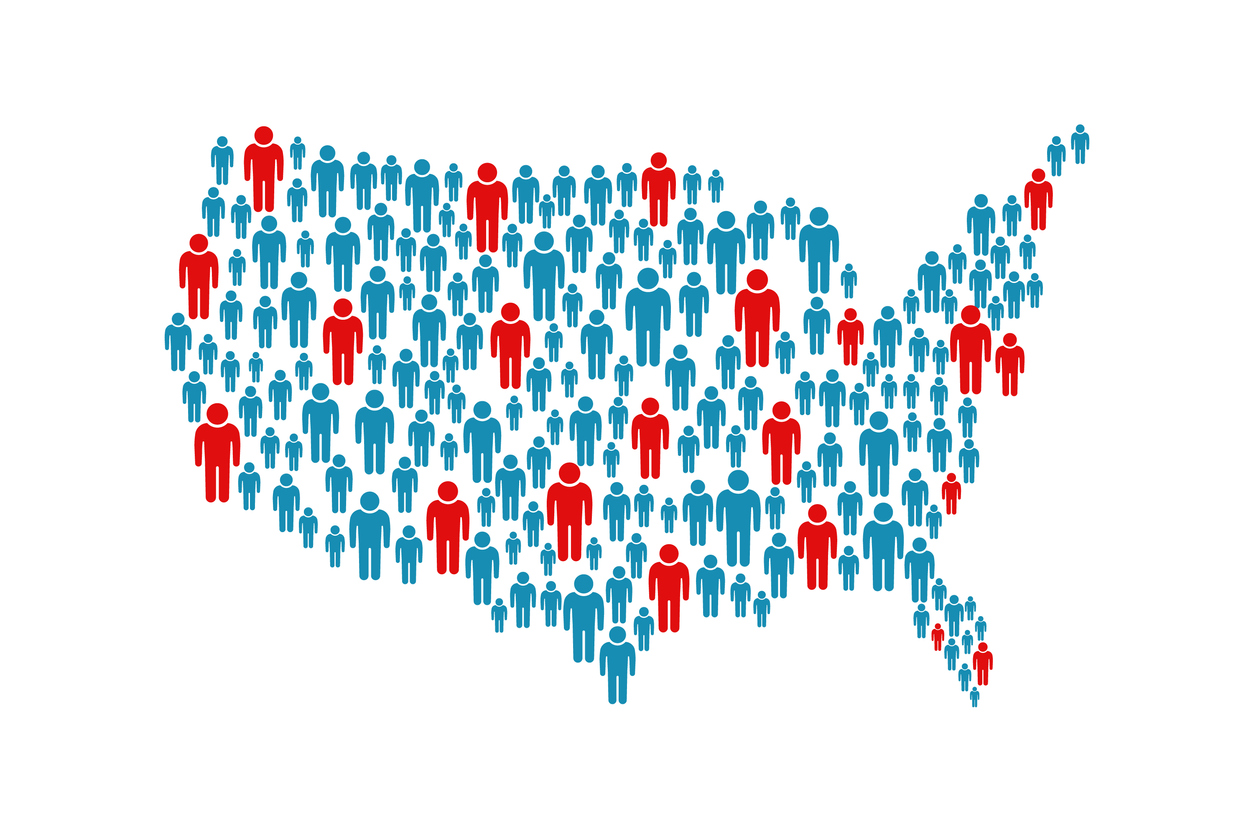
Share On Social!
The U.S. Latino population has risen to 62,647,044, representing 18.9% of the nation’s population, according to new Census Bureau estimates.
The number of Latinos in the U.S. grew by 767,907 from 2020 to 2021, an increase of 1.2%, according to the newest data.
Here is everything you need to know.
What Defines “Hispanic Origin” on the Census?
Individuals filling out the Census can choose between two ethnicities, “Hispanic or Latino” or “Not Hispanic or Latino”
What defines being “Hispanic or Latino” when filling out the Census?
According to the Census website, the U.S. Office of Management and Budget (OMB) defines “Hispanic or Latino” as a person of Cuban, Mexican, Puerto Rican, South or Central American, or other Spanish culture or origin regardless of race.
The Census Bureau has conducted content tests to improve the design and function of different questions on race and ethnicity since the 1970s.
With the growth in diversity and population, individuals may find the ethnic categories confusing or wish to see their specific on the census questionnaire.
Census research showed that, over time, an increasing number of people do not identify with any of the official OMB race categories, contributing to a rise in respondents who are racially classified as “Some Other Race” (SOR).
The Census website reports, “This was primarily due to reporting by Hispanics, who make up the overwhelming majority of those classified as SOR, not identifying with any of the OMB race categories.”
The Census Bureau has continued to conduct research and outreach regarding race and ethnicity. Read more about the usage of the terms Latinx, Latino, and Hispanic.
How Fast is the Latino Population Growing?
The Latino population continues to grow rapidly.
In 2010, Latinos accounted for 16% of the U.S. population.
Latinos reached 18.5% of the U.S. population in 2019, and they have now reached 18.9% as of 2021, according to the new Census Bureau data. Projections show the U.S. Latino population is expected to reach 29% by 2050.
“Hispanic (of any race) was the largest gaining and second-fastest-growing race or Hispanic origin category, increasing by 767,907 or 1.24% [from 2020 to 2021],” according to the data.
The Hispanic origin category increased by 1.54% in the 12-month period between 2020 and 2021.
Of the current 62,647,044 U.S. Latinos, there are 31,716,199 Latino males (50.6%) and 30,930,845 Latina females (49.4%).
Where Is the Latino Population Rising or Falling?
The states of California, Florida, and Texas continue to have the biggest Latino populations, but other states have seen growth as well.
Maine and Montana were the fastest-growing states for Latinos, both at a 5.4% rate.
Only two areas experienced declines in Latino population, including New York with a 1.1% decrease and the District of Columbia 2.5% decrease.
The median Latino population for counties in 2021 was 1,217 people. Los Angeles County had the largest Latino county population at 4,824,989 people, followed by Harris County, Texas (2,097,602) and Miami-Dade County, Florida (1,838,864).
California saw the largest Latino population with a total of 15,754,605.
What is the Median Age of U.S. Latinos?
The Census Bureau also reported that the “median age for most states also increased from 2020 to 2021, indicating their populations are getting older overall.”
2021 Census Population Estimates show that the national median age has increased by 3.4 years, with the largest single-year gain of 0.3 years coming in 2021, bringing it to 38.8 years.
While Latinos are much younger than the national median age, the median age of Latinos increased from 30.2 in 2020 to 30.5 in 2021. This is older than the median age of Latinos in 2010 (27.3 years).
Why Is Latino Health Important?
The rapid growth of the Latino population means the nation’s future health depends on it.
Yet Latinos face vast health inequities that contribute to health disparities in cancer, Alzheimer’s, COVID-19, and other health conditions.
Inequities include:
- Access to healthy food and food insecurity.
- Health discrimination and
- Wage gaps and workforce discrimination.
- Housing, transportation, and green spaces.
- Access to healthcare and clinical trials.
Systemic change is needed to address the inequities to achieve health equity, where Latinos and all people have a fair, just opportunity to be their healthiest.
How Can You Improve Health Equity for U.S. Latinos?
You can speak up for Latino health in your community.
Enter your county name to receive a Salud America! Health Equity Report Card.
The report card serves as a data dashboard tool that auto-generates Latino-focused and local data with interactive maps and comparative gauges.
This can help you visualize and explore health-related factors in your area compared to your county to the rest of the state and the nation.
The data from the report card can help start or support a conversation about solutions to inequities that impact your community! Share it with local leaders and on social media!
Get your Health Equity Report Card!
By The Numbers
50
percent
of big U.S cities have a local board of health




